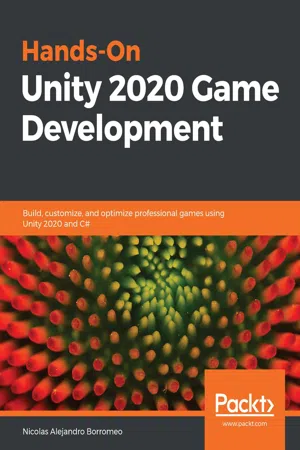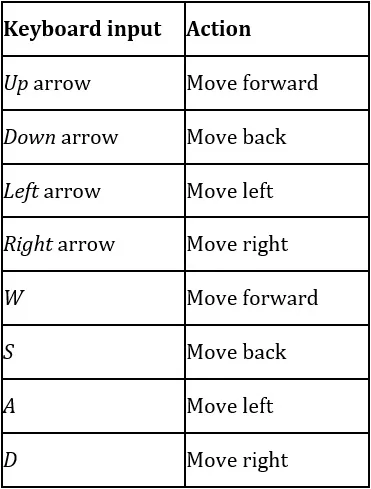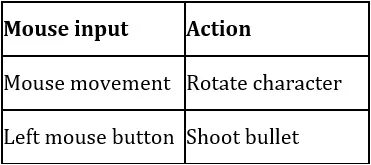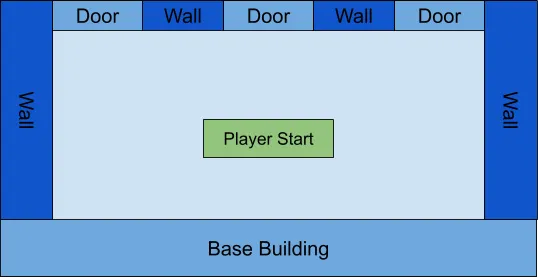
Hands-On Unity 2020 Game Development
Build, customize, and optimize professional games using Unity 2020 and C#
- 580 pages
- English
- ePUB (mobile friendly)
- Available on iOS & Android
Hands-On Unity 2020 Game Development
Build, customize, and optimize professional games using Unity 2020 and C#
About this book
Build immersive game experiences using the new Unity 2020 features with this practical guide
Key Features
- Unleash the capabilities of C# scripting for creating immersive UI, graphics, Game AI agents and much more
- Explore Unity's latest tools, including Universal Render Pipeline, Shader Graph, and VFX graph, to enhance graphics and animation
- Get started with building augmented reality experience using Unity's AR Foundation
Book Description
Over the years, the Unity game engine has extended its scope from just being about creating video games to building AR/VR experiences, complex simulations, real-time realistic rendering, films, and serious games for training and education. Its features for implementing gameplay, graphics, and customization using C# programming make Unity a comprehensive platform for developing professional-level, rich experiences.
With this book, you'll be able to build impressive Unity projects in a step-by-step manner and apply your knowledge of Unity concepts to create a real-world game. Complete with hands-on tutorials and projects, this easy-to-follow guide will show you how to develop your first complete game using a variety of Unity tools. As you make progress, you'll learn how to make the most of the Unity Editor and create scripts using the C# programming language. This Unity game development book will then take you through integrating graphics, sound, and animations and manipulating physics to create impressive mechanics for your games. You'll also learn how to code a simple AI agent to challenge the user and use profiling tools to ensure that the code runs in a performant way. Finally, you'll get to grips with Unity's AR Foundation for creating AR experiences for 3D apps and games.
By the end of this book, you'll have developed a complete game and will have built a solid foundation using Unity's tooling ecosystem to develop game projects of any scale.
What you will learn
- Write scripts for customizing various aspects of a game, such as physics, gameplay, and UI
- Program rich shaders and effects using Unity's new Shader Graph and Universal Render Pipeline
- Implement postprocessing to increase graphics quality with full-screen effects
- Create rich particle systems for your Unity games from scratch using VFX Graph and Shuriken
- Add animations to your game using the Animator, Cinemachine, and Timeline
- Implement game artificial intelligence (AI) to control character behavior
- Detect and fix optimization issues using profilers and batching
Who this book is for
This book is for game developers looking to migrate to the Unity game engine. If you are a developer with some exposure to Unity, this book will help you explore its latest features. Prior experience with C# programming is required to get the most out of the book.
Frequently asked questions
- Essential is ideal for learners and professionals who enjoy exploring a wide range of subjects. Access the Essential Library with 800,000+ trusted titles and best-sellers across business, personal growth, and the humanities. Includes unlimited reading time and Standard Read Aloud voice.
- Complete: Perfect for advanced learners and researchers needing full, unrestricted access. Unlock 1.4M+ books across hundreds of subjects, including academic and specialized titles. The Complete Plan also includes advanced features like Premium Read Aloud and Research Assistant.
Please note we cannot support devices running on iOS 13 and Android 7 or earlier. Learn more about using the app.
Information
Chapter 1: Designing a Game from Scratch
- Game concept
- Game characters
- Gameplay
- The difficulty balance
- Documentation
Game concept
- Game idea
- Input controls
- Winning and losing
Input controls



Winning and losing
- Number of remaining Waves
- Number of our Base Life
- Number of our Hero Life
Game characters
Hero
- Idle: This animation will play when the character is not being moved by the player.
- Run: This animation will play when the character is being moved by the player.
- Shoot: This is an animation that will cause the Hero to shoot a bullet.
Enemies
- Run: The Enemies will be able to run toward the Hero when they see him and will stop when they are near enough to the player to start attacking him.
- Attacking: This animation will play when the Enemy is near enough to attack the base or the player.
- Death: This animation will play when the Enemy is defeated by the player.
Gameplay
- Game-world layout
- Starting condition
- Ending condition
- Point system
- Heads-up display (HUD)
Game-world layout

- Wall: Impenetrable barriers that prevent the player from going outside the play area.
- Door: Impenetrable as the walls but will also serve as the Spawn Position of the Enemies. The Enemies will spawn behind them and can penetrate them to enter our Base Area.
- Player Start: Start Hero position.
- Base Building: Our Base. The enemies must be close enough to attack it.
Starting condition
- Number and placement of Enemies' Spawn Points (doors) ...
Table of contents
- Hands-On Unity 2020 Game Development
- Preface
- Chapter 1: Designing a Game from Scratch
- Chapter 2: Setting Up Unity
- Chapter 3: Working with Scenes and GameObjects
- Chapter 4: Grayboxing with Terrain and ProBuilder
- Chapter 5: Importing and Integrating Assets
- Chapter 6: Materials and Effects with URP and Shader Graph
- Chapter 7: Visual Effects with Particle Systems and VFX Graph
- Chapter 8: Lighting Using the Universal Render Pipeline
- Chapter 9: Fullscreen Effects with postprocessing
- Chapter 10: Sound and Music Integration
- Chapter 11: User Interface Design
- Chapter 12: Creating Animations with Animator, Cinemachine, and Timeline
- Chapter 13: Introduction to Unity Scripting with C#
- Chapter 14: Implementing Movement and Spawning
- Chapter 15: Physics Collisions and Health System
- Chapter 16: Win and Lose Conditions
- Chapter 17: Scripting the UI, Sounds, and Graphics
- Chapter 18: Implementing Game AI for Building Enemies
- Chapter 19: Scene Performance Optimization
- Chapter 20: Building the Project
- Chapter 21: Finishing Touches
- Chapter 22: Augmented Reality in Unity
- Other Books You May Enjoy